The Em (E minor) guitar chord is a foundational chord for anyone starting their guitar journey. Known for its melancholic yet versatile sound, the Em chord is surprisingly easy to learn and essential for playing countless songs. This guide will walk you through how to play the Em Guitar Chord correctly, practice effectively, and understand its place in music.
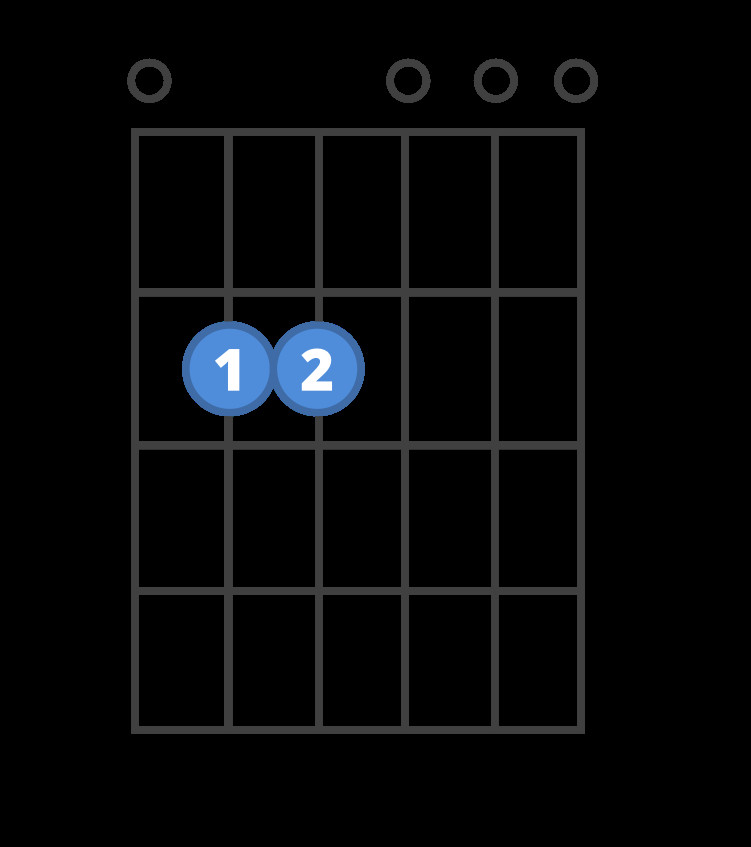 Chord diagram for the Em guitar chord.
Chord diagram for the Em guitar chord.
Getting Your Fingers in Position for the Em Chord
The beauty of the Em chord lies in its simplicity. You only need to use two fingers to form this chord, making it one of the first chords many guitarists learn. Here’s a step-by-step breakdown:
- Locate the Second Fret: Find the second fret on your guitar. This is the metal bar two frets away from the headstock of your guitar.
- Place Your Middle Finger (Finger 2) on the 5th String: The 5th string is the A string (the second thickest string). Place your middle finger on this string right behind the second fret.
- Place Your Ring Finger (Finger 3) on the 4th String: The 4th string is the D string (the third thickest string). Place your ring finger on this string also right behind the second fret. Ensure it’s next to your middle finger, on the string below.
- Strum All Six Strings: Once your fingers are in place, strum all six strings from the thickest (6th string – low E) to the thinnest (1st string – high E). You should hear a clear and resonant Em chord.
Many beginners wonder if they can use their index and middle fingers instead. While technically possible, using your middle and ring fingers (fingers 2 and 3) offers a significant advantage. This fingering leaves your index finger free and readily available to transition to other common chords like C major, A minor, or D major, making chord changes smoother and faster in the long run.
 Chord diagram for the Em guitar chord.
Chord diagram for the Em guitar chord.
Em Chord and E Major Chord: What’s the Difference?
If you’re already familiar with the E major chord, you’re in for a treat. The Em chord is just a minor adjustment away! The core shape is almost identical, highlighting the close relationship between major and minor chords.
Let’s compare the diagrams:
Em Chord
 Chord diagram for the Em guitar chord.
Chord diagram for the Em guitar chord.
E Major Chord
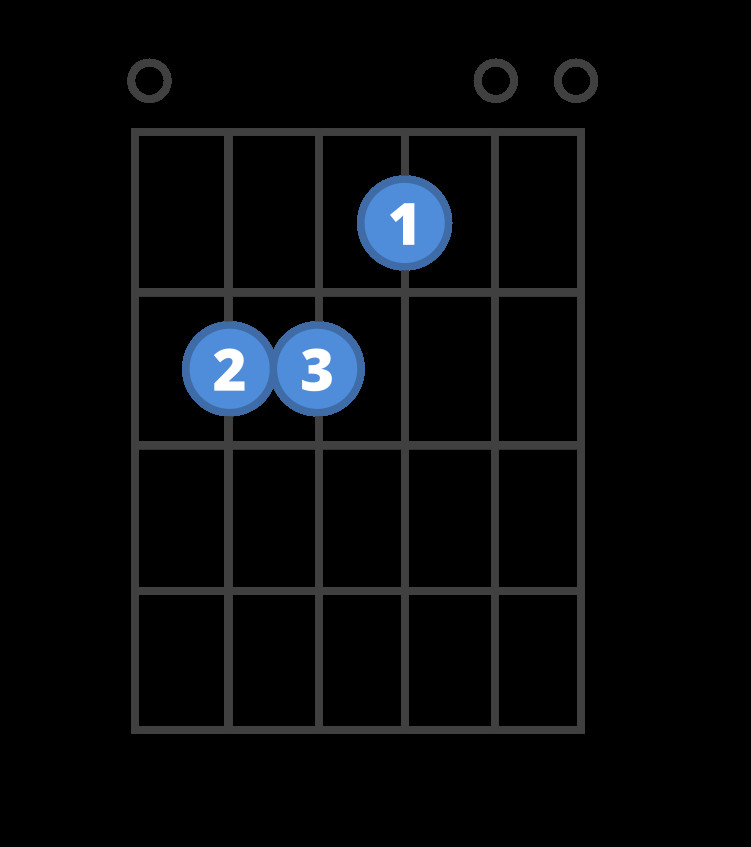 Chord diagram for the E guitar chord.
Chord diagram for the E guitar chord.
A Touch of Music Theory (Simplified):
The key difference lies in just one note. In the E major chord, the G note on the 3rd string is raised to a G#. This seemingly small change transforms the interval from a minor third (in Em) to a major third (in E major). This interval change is what creates the distinct sound difference between major (brighter, happier) and minor (darker, melancholic) chords. For now, just remember that removing the index finger from the E major shape effectively flattens the third and turns it into the Em chord.
Practice Techniques to Master the Em Chord
Consistent and smart practice is crucial for embedding the Em chord into your muscle memory. Here’s an effective practice drill:
The On-Off Drill:
This drill is fantastic for memorizing chord shapes quickly and cleanly.
- Form the Em Chord: Place your fingers into the Em chord shape as described earlier.
- Strum and Count: Strum the chord for four beats, counting aloud “1, 2, 3, 4.” Ensure each strum is even and in time.
- Release and Count: Take your fingers completely off the strings for another four beats, continuing to count “1, 2, 3, 4.” During this time, visualize the Em chord shape and finger positions.
- Repeat: Immediately place your fingers back into the Em chord shape and repeat the cycle.
Repeating this “on-off” cycle helps your brain and fingers memorize the required movements and muscle memory for the Em chord. The counts provide a rhythm and timing element, essential for musicality.
Chord Transition Practice:
Once you are comfortable with the On-Off Drill, start practicing transitions between Em and other chords. Great beginner chord pairings with Em include:
- Em and G Chord:
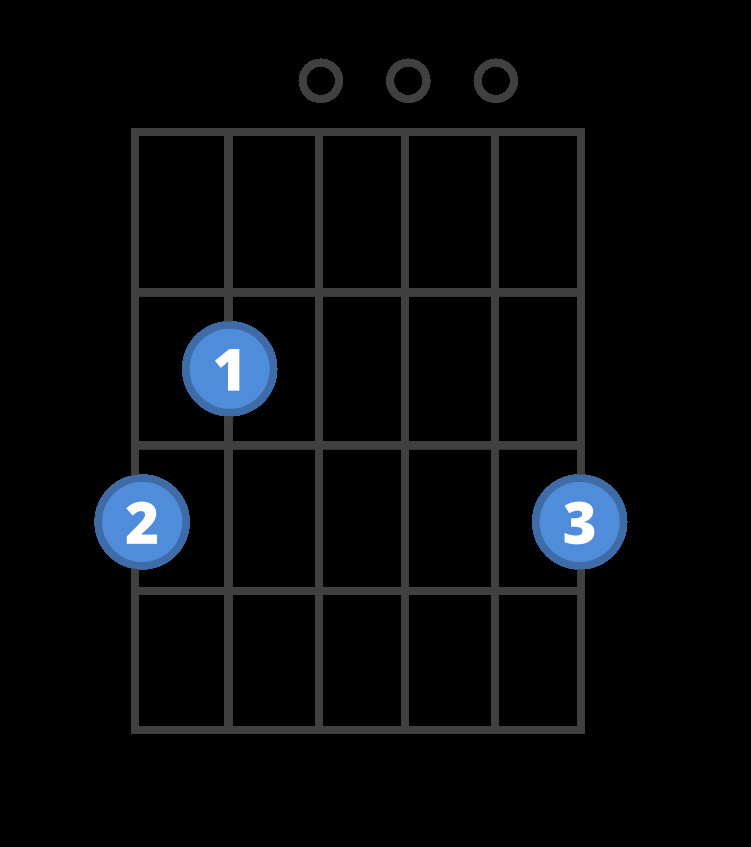 Chord diagram for the G guitar chord.
Chord diagram for the G guitar chord. - Em and C Chord:
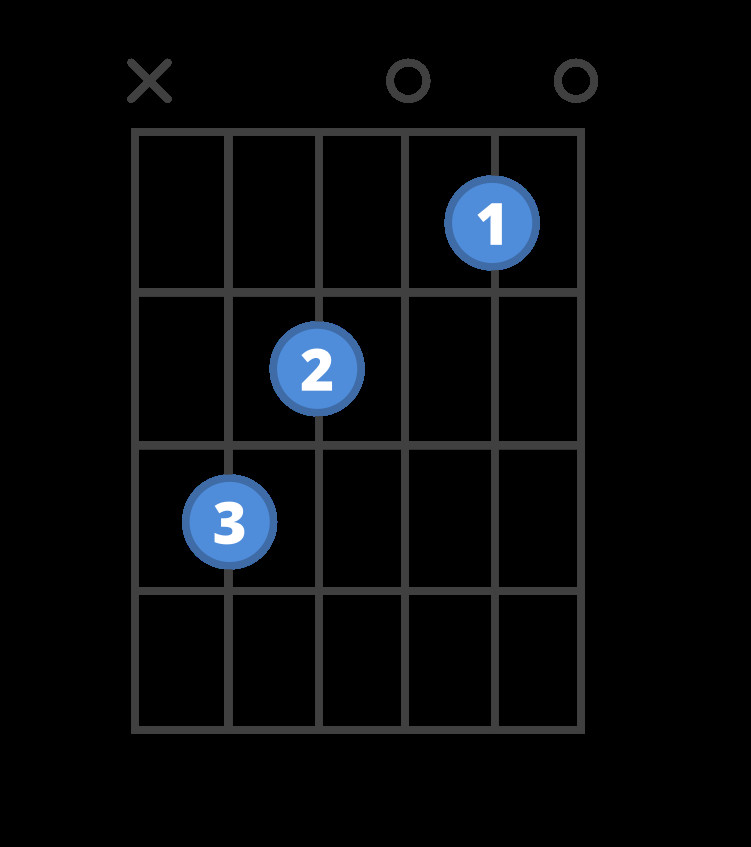 Chord diagram for the C guitar chord.
Chord diagram for the C guitar chord. - Em and D Chord:
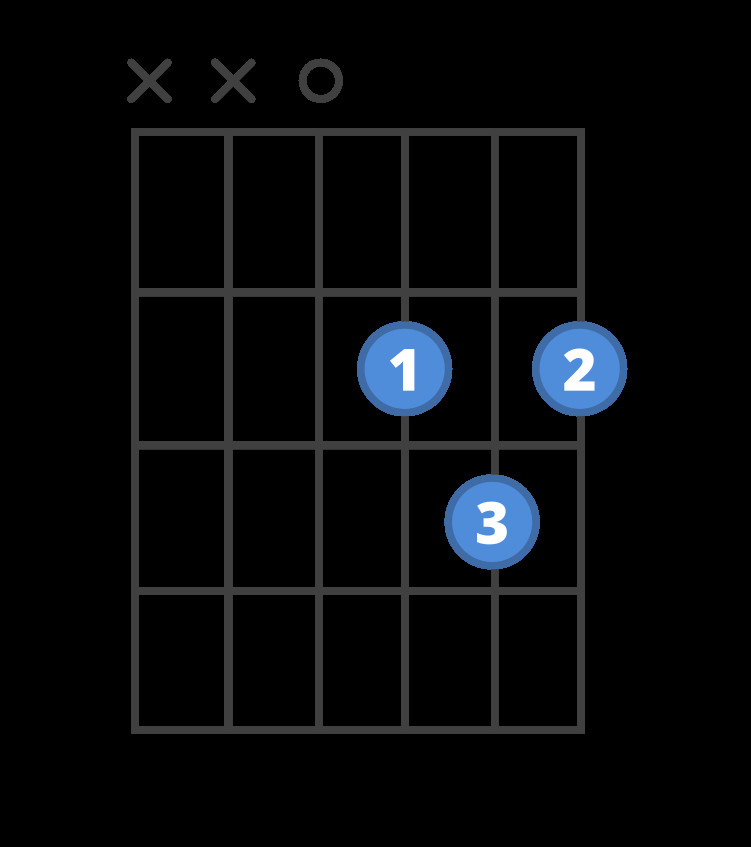 Chord diagram for the D guitar chord.
Chord diagram for the D guitar chord.
Practice switching between Em and each of these chords. Focus on smooth and quick transitions, minimizing any pauses or breaks in rhythm. Start slowly and gradually increase speed as your transitions become cleaner.
Play Along and Put Em Chord into Practice
The best way to solidify your Em chord is to play along with songs! The Em chord is extremely common in popular music across genres.
Try practicing the Em chord along with these other beginner-friendly chords: G, D, and C. Many simple song progressions use these chords, giving you ample opportunity to practice chord changes in a musical context.
Dedicate even just five minutes a day to moving between these chords in a rhythmic manner. This focused practice will dramatically improve your chord switching speed and accuracy.
Expanding Your Chord Vocabulary with Em and Related Chords
Once you’ve mastered the Em chord, you’ll find it opens doors to a world of musical possibilities. Here are some chords that sound excellent alongside Em, allowing you to create simple yet beautiful chord progressions:
- G Major: A bright and uplifting major chord that contrasts nicely with Em.
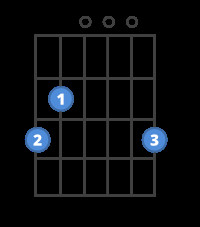 Chord diagram for the G guitar chord.
Chord diagram for the G guitar chord. - C Major: Another fundamental major chord, creating a classic and versatile sound with Em.
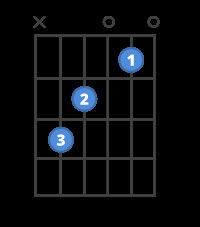 Chord diagram for the C guitar chord.
Chord diagram for the C guitar chord. - D Major: A powerful major chord that adds energy to progressions with Em.
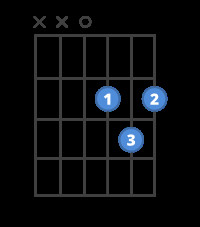 Chord diagram for the D guitar chord.
Chord diagram for the D guitar chord. - A Minor (Am): A natural minor chord pairing with Em, creating a deeper minor tonality.
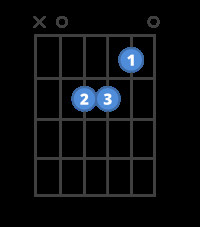 Chord diagram for the Am guitar chord.
Chord diagram for the Am guitar chord.
Explore More Easy Minor Chords
After conquering Em, why not expand your minor chord repertoire? Here are a couple more easy minor chords to explore:
- A Minor (Am): Another essential minor chord, often used with Em.
 Chord diagram for the Am guitar chord.
Chord diagram for the Am guitar chord. - D Minor (Dm): Adds a different flavor to minor chord progressions.
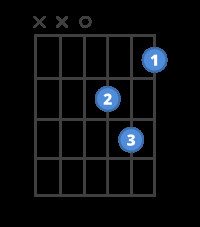 Chord diagram for the Dm guitar chord.
Chord diagram for the Dm guitar chord.
Learning the Em guitar chord is a significant step in your guitar playing journey. With its ease of play and musical versatility, mastering the Em chord will unlock countless songs and musical possibilities. Keep practicing, explore new chords, and enjoy the rewarding path of learning guitar!
Explore ChordBank for more chords, scales, lessons, and tools to enhance your guitar playing! ChordBank Links

